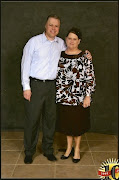(A REFLECTIVE LOOK AT OUR MISSION)
(A Three-Part Blog)
(Observe the title of this post was the former name of our church in Auburn. We are now known as Northwest Family Church. This was a message I preached during a transition period in 2003.)
The history of this local assembly runs deep and is very colorful. From humble beginnings in storefronts and various gathering places until the building we are in which was built in the l970’s.
When this congregation was formed in 1923, Ruth Stewart was seven years of age and her little brother, Arthur, was around 5 years of age. He’s the one we call “Doc.”
As a congregation, we have witnessed many changes in our history. Some have been welcome, some not so welcome. Our growth has been consistent and solid, with some variations over the years. Our pulpit has hosted many shepherds-pastors. Each has contributed to who and what we are as a body of Christian believers.
Where do we go from here? Where will our future growth come from? Are we destined to join other movements and churches, which refused to honestly examine their purpose and mission and to adjust their methods for growth?
In the church world, at large, there is a huge paradigm-shift in philosophy, in doctrine. In many metropolitan cities, expansive, mega-churches have sprouted with 15—even 20, 000 attendees. One such church has two Saturday evening worship services and five Sunday worship services, each one filled to capacity.
When I was a teenager in the 50’s, the largest Pentecostal churches were around 200 in attendance. In my lifetime, I have witnessed an explosion of growth in many, non-traditional, non-denominational churches. It is common for many of our Assembly of God churches to have 2-3000 in attendance.
God has placed Calvary Temple in this exciting period of history. We will either adapt or catch a vision for what God wants to do, or we could fade off into oblivion like many denominational churches. Go into many of the major cities of the East and Northeast. There you will see great edifices, which no longer have services and have been closed or taken over by aggressive, evangelistic churches that are reaching communities that, have long been abandoned by other churches.
1. TAKING A LOOK AT GROWTH
In the past;
Our church has witnessed remarkable growth in attendance in the 14 years that Milbre and I have attended here.Some stayed, others exited out the back door.
There are different measures of growth.
Transfer growth
For Pastors and church leaders, numerical growth is a powerfully, intoxicating justification. It can impair sound judgment and make you vulnerable to just about anything that will help you achieve your success.
Author, William Chadwick, has written a book entitled, “Stealing Sheep, the church’s hidden problems with transfer growth”
He relates the time as a child, he stole a penny piece of bubble gum and after being caught, his mother made him pay restitution by finding bottles he could redeem and pay the store for the gum. He said the next time he stole; he was an Ordained Christian minister. His treasure was no longer penny bubblegum, but was “sheep”, active members of the body of Christ in another congregation that were the objects of his attention.
Some were spiritually fat sheep, so well fed that they hated the same old meals that had brought them health and prosperity thus far. They were in search of some new and exciting dimension in church life, an unidentified something more. Usually bored, these gross underachievers were not often praised and could be easily enticed to transfer their membership by the promise of a new, fulfilling and invigorating experience.
Others were thin, starving animals—members of a church whose pastor preached the same old message every week and offered no spiritual food to the congregation. They were easily wooed away by offers to address the most basic of spiritual needs.
Then there were the black sheep: consummate malcontents who were always testing and challenging pastoral decisions, points of theology or any other topic that could elicit controversy. Perpetually ready to escape form their current shepherd, they lived lives of seeking, church hopping and wanderlust.
Last, there were the dumb sheep, the easily influenced that simply followed the flock. Many were mesmerized by the opinions and actions of others. He goes on to say that these, never really having an opinion of their own, they sought security in keeping in line with the latest trends of the majority. They would leave their church, just because others were doing so.
Changing Values
Our culture’s influence on the church has generally been underestimated. No longer are many people loyal to the church of their historic roots. He points out that, for many, the church has changed from a place where one serves to where one seeks services. The important question they ask, “Does this church meet our needs?” Needs can be confused with wants, and wants can be subjective. This can lead us to a continuous cycle to church shopping.
The chapter ends with the sad news after years of tremendous growth of this sort, the foundations of his church began to crack, when those same folks continued their quest for the “perfect” church. And they witnessed a dramatic drop in their attendance. It was a depressing and an awakening experience.
Growth from within
Planned, calculated growth that comes from birth of new Christians in the local assembly that are trained to reproduce themselves in others is God’s plan! He wants us to be evangelistic, passionate about Missions and passionate about this city where he has planted this church.
To understand this concept, I want to first address the question in the next post—“What Is The Church?”.





No comments:
Post a Comment